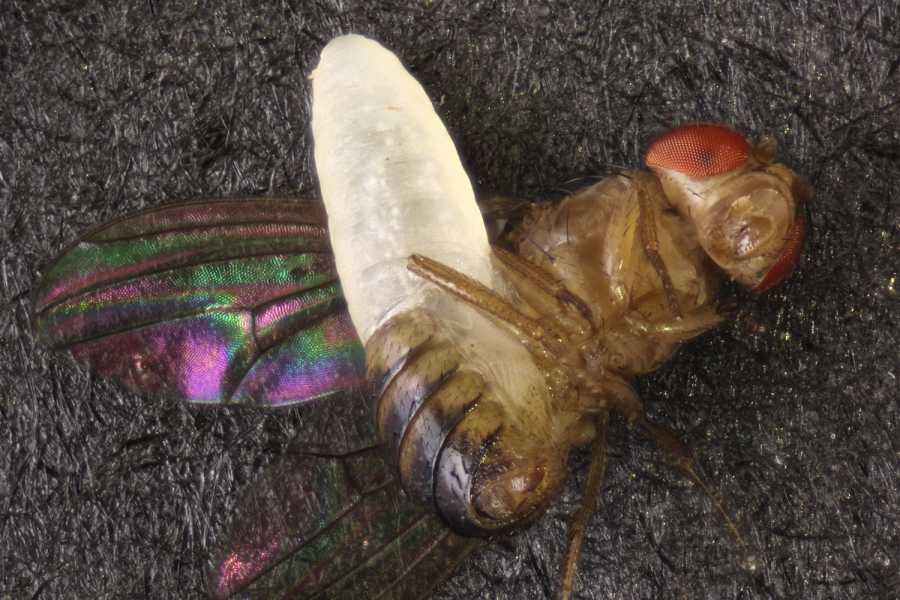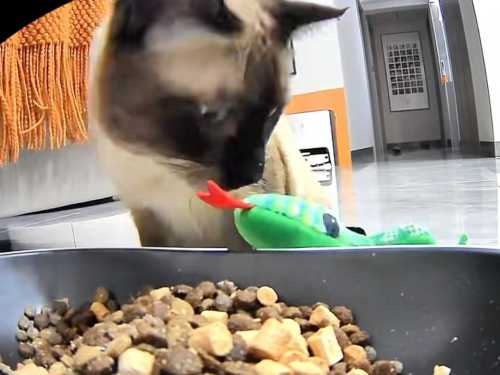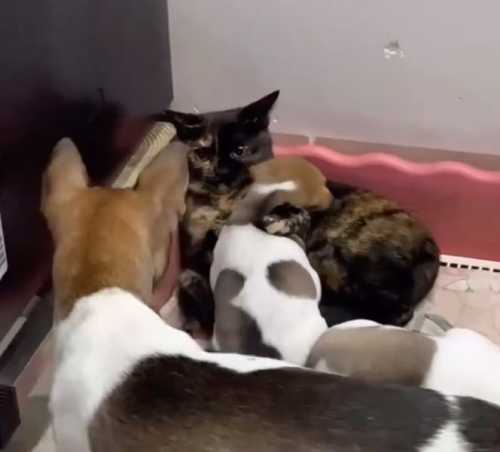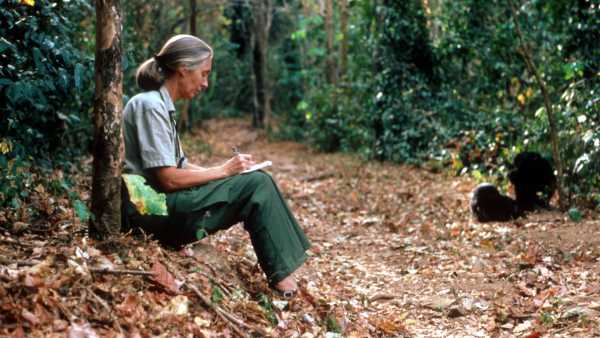
A parasitoid wasp larva emerges from a fruit fly. (Photo courtesy of Matthew Ballinger)
Mississippi scientists have identified a previously unknown species of parasitoid wasp that develops inside the bodies of living adult fruit flies and then bursts out of them, reminiscent of the xenomorph from the Alien films.
This cunning predator, named Syntretus perlmani, is the first wasp found to infest adult fruit flies – previously known wasp species attacked the flies at earlier, vulnerable stages of their development, such as larvae and pupae. These wasps are parasitoids rather than parasites, as they always kill their hosts, whereas parasites usually do not.
A team of researchers stumbled upon the wasp while collecting the common fruit fly Drosophila affinis in their Mississippi backyards. They published their findings Wednesday (Sept. 11) in the journal Nature.
The study's lead author, biologist Logan Moore, who conducted the research as part of his doctoral dissertation at Mississippi State University, told Live Science that the female S. perlmani uses her needle-like ovipositor organ — the stinger characteristic of stinging wasps — to puncture the abdomen of a fruit fly and deposit an egg. The egg then hatches into a tiny wasp larva, which develops inside the fly for about 18 days before leaving its host to die.
“It actually comes out of the fly's side,” Moore noted. “To add another level of horror, the fly typically remains alive for several hours afterward.”
In March 2023, researchers were screening fruit flies for parasitic worms called nematodes when they first noticed a spiny-tailed wasp larva in the abdomen of one of the flies.
“We didn't think it could be true at the time,” Moore said. “If you dissect thousands of flies, you might see weird and unusual things and never see them again.”
However, the scientists found more wasp larvae and eventually confirmed their findings by raising the wasps in the lab and analyzing their DNA. In the lab, mature S. perlmani larvae emerged from their hosts, explored their environment for several hours, and then burrowed into any available substrate. Once in the shelter, they entered a cocoon stage for about 23 days before emerging as adults, according to the study.
The team mated adult wasps with other fruit flies of the genus Drosophila and found that S. perlmani was also able to infect Drosophila acutilabella. The researchers also found a DNA signature of S. perlmani in publicly available genomic data from minced Drosophila melanogaster, confirming that the wasp could infect this species as well.
Sourse: www.livescience.com





